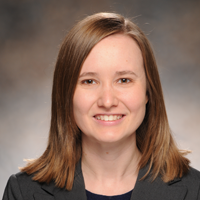UNC researchers discuss pitfalls of convenience samples for COVID-19 antibody testing
July 23, 2020
Seroprevalence studies use blood serum tests to identify people in a population or community who have antibodies against an infectious disease. In the case of COVID-19, seroprevalence studies based on convenience samples are being reported widely and extrapolated to larger populations. In a viewpoint article in the Journal of Infectious Diseases, three UNC-Chapel Hill researchers discuss the pitfalls that can arise from convenience samples and offer guidance for moving towards representative and timely population estimates of COVID-19 seroprevalence.

Dr. Ross Boyce

Dr. Allison Aiello

Dr. Bonnie Shook-Sa
The co-authors of “Estimation without Representation: Early SARS-CoV-2 Seroprevalence Studies and the Path Forward” are Bonnie Shook-Sa, DrPH, postdoctoral research associate (who will be an assistant professor of biostatistics starting August 1), and Alison Aiello, PhD, professor of epidemiology — both at the UNC Gillings School of Global Public Health — and Ross Boyce, MD, assistant professor of infectious diseases at the UNC School of Medicine.
They write: “The recent development and regulatory approval of a variety of serological assays indicating the presence of antibodies against SARS-CoV-2 has led to rapid and widespread implementation of seroprevalence studies. Accurate estimates of seroprevalence are needed to model transmission dynamics and estimate mortality rates. Furthermore, seroprevalence levels in a population help guide policy surrounding re-opening efforts. The literature to date has focused heavily on issues surrounding the quality of seroprevalence tests and less on the sampling methods which ultimately drive the representativeness of resulting estimates. Seroprevalence studies based on convenience samples are being reported widely and extrapolated to larger populations for the estimation of total COVID-19 infections, comparisons of prevalence across geographic regions, and estimation of mortality rates. In this viewpoint, we discuss the pitfalls that can arise with the use of convenience samples and offer guidance for moving towards more representative and timely population estimates of COVID-19 seroprevalence.”
Boyce is leading a COVID-19 seroprevalence study in Chatham County, North Carolina. He and Aiello also are co-leading a network that unites researchers conducting seroprevalence studies across the state.
Contact the UNC Gillings School of Global Public Health communications team at sphcomm@unc.edu.
